Chitrak – Plumbago zeylanica (Leadwort) Benefits, Dose, Side Effects, Research
Chitrak is one of the powerful digestive and carminative herbs of Ayurveda. It is used in most Ayurvedic medicines for indigestion. Its botanical name is Plumbago zeylanica. It is called Leadwort in English.
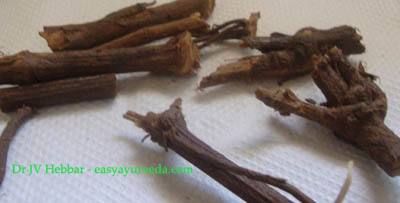
Botanical Name– Plumbago zeylanica Linn.
Family – Plumbaginaceae (Chitraka Kula)
Table of Contents
Vernacular Names
Hindi Name – Cheeta, Chitra, Chitraka, Chita, Chitaraka, Chitavur
Telugu Name – Chitramulamu, Agnimatha, Tellachitra
English Name – Leadwort
Bengali Name – Chita, Chitu
Marathi Name – Chitramul, Chitraka
Gujarati Name – Chitro, Chitra, Pitaro
Tamil Name – Chittiri, chittira, penchitar, kodivel
Arabian name – Sheetaraj
Farsi name – Sheetar
Kannada name – Chitramula, Bilichitramula
Punjabi name – Chitra
Malayalam name – Vellakotuveri, Kotubeli
Sanskrit synonyms
Anala, Dahana, Pithi, Vahnisajnaka, Agni, Agnika, Jyothi, Nirdahana, Vahni, Sikhi, Vyala, Hutasana – all these synonyms suggest towards fire. It is because it helps to improve digestion strength. While collecting this herb, it is usually found that the palms get a burning sensation due to the hotness of this herb. Hence the synonyms like Dahana (burning).
Agnika – “ agnitulyha ushna sparshe veeryam cha, – Having fire quality
Jarana – Chitraka digest Anna
Analanama – It has burning qualities like that of Agni ( Fire)
Vyala – It can tear apart unwanted tissue growth
Chitraka is a very unique ayurvedic herb, used both orally and externally. Ayurvedic texts have explained that all synonyms of fire (agni) hold good for Chitraka. This is due to its fire-like action. i.e. it is hot in potency, pungent in taste and undergoes a pungent kind of bio- transformation (vipaka). Moreover it causes blisters if applied over the skin surface and leads to burning and ulceration.
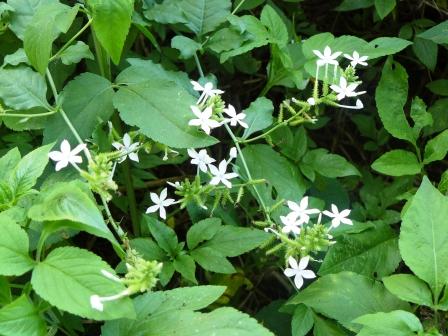
Classical categorization
Charaka-
Deepaneeya – Group of herbs that improve appetite and digestion strength
Shoola prashamana – group of herbs that relieve abdominal colic pain
Arshoghna – group of herbs used in treating piles
Lekhaneeya – Group of herbs having scraping property.
Susrutha– Pippalyadi, Mustadi, Amalakyadi, Varunadi, Aragvadadi group of herbs.
Vagbhata- Pippalyadi, Mustadi, Varunadi, Aragvadadi group of herbs.
Bhavaprakasha Nighantu – Haritakyadi varga
Raja Nighantu – Pippalyadi varga
Different varieties
Vagbhata quoted three varieties namely Shweta (white), Peeta (yellow) & Asita (black) Citraka.
Usually the following varieties are found
P. zeylanica- White, Sweta
P . rosea L. –Red – Rakta
P. capensis Thunk – Nila – Blue.
For all therapeutic purposes, Plumbago zeylanica or the white variety is used.
Distribution
Found throughout India. It is also cultivated at some places.
Major chemical constituents
Chitranone, Plumbagin, 3- Chloroplumbagin, droserone, Elliptinone, Zeylanone and Zeylinone, Maritone, Plumbagicacid, Dihydrosterone, B- Sitosterol etc.
(Reference: Illustrated Dravyaguna Vijnana, Vol. II, by Dr JLN Shastry)
Medicinal qualities
Ayurvedic texts have explained that all synonyms of fire (agni) hold good for Chitraka. This is due to its fire-like action. i.e it is hot in potency, pungent in taste and undergoes a pungent kind of bio- transformation (vipaka). Moreover it causes blisters if applied over the skin surface and leads to burning and ulceration.
Depending upon the flower coloring it is identified with four varieties like white, yellow, red and black.
Red and white are medicinally used and red one is more hot in potency.
The pungent taste and hot potency of Chitraka is because of the irritant chemical constituent of the drug plumbagin. It is vatakaphahara inn nature.
Effect on Tridosha
Because of its hotness, it balances Vata and Kapha Doshas.
Part used, dosage
Part used- Root Bark
Dosage– Powder 1-2 grams in a divided dose per day, is the maximum prescribed dose.
Sanskrit verse
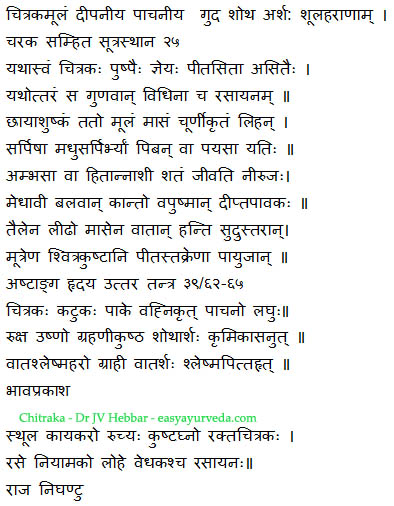
Therapeutic qualities
Therapeutic qualities of Plumbago zeylanica –
Of all the herbs that are carminative, digestive, useful in hemorrhoids, anti inflammatory, and anti colic, leadwort is the best.
It is used for anti-aging purposes. For this, the herb is administered along with milk / ghee and honey or with ghee alone for one month.
For balancing Vata, it is administered along with sesame oil.
It is administered along with cow urine for the treatment of leucoderma.
It is useful in the treatment of non bleeding hemorrhoids.
Vahnikrut – Improves digestion strength
Pachana – digestive
Laghu – light to digest
Grahanihara – relieves sprue, malabsorption syndrome,
Kushtahara – useful in skin diseases
Shothahara – anti inflammatory
Kruminut – useful in intestinal worm infestation
Kasanut – useful in cough, cold
Grahi – absorbent, absorbs excess moisture from intestines
Vatarsha – useful in hemorrhoids of Vata origin (with pain)
It is used in the treatment of amenorrhoea.
It is used in the treatment of hepatomegaly and splenomegaly.
Red variety of Chitraka is Sthula Kayakara – because it improves appetite, it helps to gain weight.
Home Remedies using Chitraka
Haemorrhoids
Root paste with ghee application to the pile mass:
Purified roots of Chitraka are taken and rubbed with cow’s ghee and fine paste is made.This ghee is applied over the external pile mass. Regular application helps to soften or shred the pilemass.
Root processed with buttermilk in hemorrhoids:
The purified roots are taken (1-2 gram) and rubbed well with buttermilk. Further this paste is consumed along with buttermilk following cooling and a carminative and digestive diet. This helps to pacify hemorrhoids.
Vitiligo
Root skin processed with milk for vitiligo:
Root skin of the leadwort – 100 grams is cooked with 800 ml of milk. Filtered. This milk is curdled. From this ghee is obtained. This ghee is applied over the vitiligo regularly. 8-10 days application turns the color of the lesion into reddish brown and further in association with suitable oral medication if the treatment is continued better results can be found.
Read related: Vitiligo: Ayurvedic Treatment, Medicines, Herbs, Remedies
Warts
Purified leadwort root fine paste application over the warts:
Fine paste of the roots is applied over the warts regularly. Meanwhile blood purifiers are to be administered for better results.
Necrosing wounds
Chitraka powder and neem decoction for washing the necrosing wounds:
Neem decoction is prepared and to this 2-3 pinch of leadwort powder is added and kept for a while .This is filtered and then this solution is used to wash the wounds and necrosed lesions.This helps to purify the wound and eases the process of healing.
General method of preparation of decoction (kashaya) – 1 tablespoon of powder is added with 2 cups of water, boiled and reduced to 1 cup, filtered.
A poison can be a nectar if processed properly and used by a skillful person in appropriate dose and vehicle. Chitraka is one such drug which has multi-fold utility and it appears to be a confident drug in the treatment of challenging problem vitiligo/ leukoderma where good research may yield much evolved fruitful remedies. Let’s watch for hope tomorrow….to treat leucoderma successfully.
Home Remedy for Hemorrhoids
Hemorrhoids being a recurrent problem, Ayurvedic home remedies are often supplemented along with oral medicines in Ayurvedic treatment. Buttermilk is used with herbs to prepare home remedies for hemorrhoids. Buttermilk is advised as a regular diet ingredient for people with piles. Let us learn an Ayurveda home remedy for this painful condition.
Buttermilk for piles
It is told in Ayurveda – vata shleshma arshasaam takraat param naasti iha bheshajam | Charaka Samhita text book.
For hemorrhoids with Vata and Shleshma (=Kapha) dominance, where there is pain, itching and mucus discharge, there is no other better medicine than buttermilk. Read more about buttermilk benefits.
Video
For this home remedy, we are using buttermilk – 100 ml and an herb called Chitraka (Plumbago zeylanica).
Original home remedy states that – make a paste of chitraka and smear it over the inner surface of a mud pot. Keep buttermilk in this pot, overnight and next day, use the thus obtained buttermilk.
We are tweaking this home remedy a little. We take 2 – 3 pinches of coarse powder of chitraka and add it to 100 ml of buttermilk, keep it for 2 – 3 hours, then filter.
Alternatively, curds can be used in place of buttermilk in this home remedy.
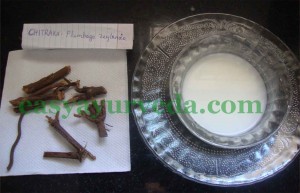
Dosage
How to consume?
10 ml of this buttermilk can be taken one or two times a day, after food.
This can be used in place of normal buttermilk in diet.
Contraindications
Better to avoid this home remedy during summer.
People with sensitive stomachs, who suffer from gastritis and who are Pitta body type – better to avoid, or use curds in place of buttermilk in this remedy, after consulting an Ayurvedic doctor.
It may not be effective in bleeding hemorrhoids.
Mode of Action
How does it act?
It is one of the best home remedies for hemorrhoids.
Chitraka and buttermilk – both are hot in nature. They both help to correct digestive enzymes, improve liver functions. This remedy helps to reduce the size of the pile mass, decrease mucous discharge and relieve pain.
Further reading:
How to make buttermilk
Research
Phytochemical and antimicrobial studies
Anticonvulsant activity
Hepato-protective activity
Side effects
It is not safe to take during pregnancy.
It may cause or worsen heavy periods
In higher doses, it causes excessive burning sensation, worsening of gastritis and may cause neuropathy.
Ayurveda uses Chitraka in various forms such as herbal powder, paste for external and internal use, herbal tea, decoction, hot and cold infusion, linctus, fermented liquid, herbal ghee and oils.
Interaction with medicines, supplements
Can this be used while taking Homeopathic medicine?
Yes. This product does not react with homeopathic medicine.
Can this medicine be continued while taking supplements like multivitamin tablets, Omega 3 fatty acids etc?
Yes. Generally, this product goes well with most dietary supplements. However, if you are taking more than one product per day, please consult your doctor for an opinion.
With western medicines
Seek your doctor’s advice if you are taking this product along with other western (allopathic / modern) medicines. Some Ayurvedic herbs can interact with modern medicine.
If both Ayurvedic and allopathic medicines are advised together, then it is best to take Allopathic medicine first, wait for 30 minutes and then take the Ayurvedic medicine.
Use of Chitrak in Treating Constipation (Plumbago zeylanica / leadwort)
Ayurvedic medicines
Ayurvedic medicines with Leadwort –
Chitrak Haritaki – used in chronic respiratory conditions
Chitrakadi vati – used in indigestion
Kalyanagulam – used in liver and skin conditions.
Chitaka is one among the Trimada group of herbs. The other two are – Musta – Cyperus rotundus – Khas khas grass and
Vidanga – Embelia ribes – False black pepper.
This combination is useful in intestinal worm infestation.
Important formulations of leadwort are Chitrakadi ghrita, Chitrakadi vati, Chitakadi kashaya, Chitraka hareetaki, Chitrakadi choorna etc.
Chitraka Shodhana purification
Chitraka Shodhana – purification method –
Usually the purification procedure is not followed. But some authors have mentioned about Shodhana for red variety of Chitraka (Rakta Chitraka) –
Chitraka roots are cut into small pieces. They are kept immersed in 3 – 4 % of lime water for 3 hours. Then it is taken out, and again immersed in fresh lime water for another 3 hours. The process is repeated three times.
Some have mentioned to keep it immersed for three days, each day, changing the lime water.
Chitaka Shodhana – purification:
Leadwort is purified by soaking in cow’s urine or lime water for seven days where each day the urine/lime water is changed. Nowadays by boiling with milk + ghee also it is purified in pharmaceutical companies.
When used externally it acts as abortifacient also. It is the reason people of village sides use it as an abortifacient stick and such crude practices are to be avoided and people should be made aware regarding complication of such practices.
Antidote for Chitrak
If taken in excess, it can cause an increase of Pitta dosha and severe burning sensation. This can be reduced by taking 1 tablespoon of jaggery, dissolved in a cup of water. Cold cow milk, amla with jaggery can also be administered.
If high doses of Chitraka causes an increased bleeding tendency, such as nasal bleeding, then astringent herbs such as Ashoka, Lodhra, pattanga, are made into kashaya (herbal decoction) and administered.
Chitraka as rejuvenator
Chitraka as anti aging and rejuvenation medicine:
Ashtanga Hrudaya explains Chitraka as anti-aging and rejuvenating medicine.
Chitrak root powder when consumed along with ghee and sesame oil for 1 year, makes the person live for 100 years.
Chitraka root with buttermilk – oral intake is explained as a remedy for hemorrhoids.
Chitraka root with sesame oil is advised as a remedy for all Vata disorders (neurological disorders)
Chitrak with cow urine is advised as a remedy for leucoderma. (Ashtanga Hridaya Uttaratantra Rasayana chapter).
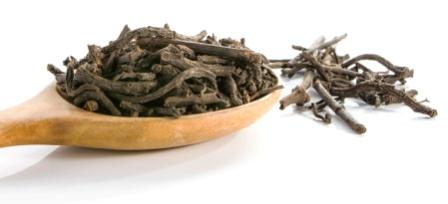
Morphology
Plumbago zeylanica is a perennial herb with glabrous, climbing, erect stem. The leaves are petiolate or sessile. The leaves are thin, ovate, entire, and glabrous with length up to 4 cm. Petiole is narrow. Flowers have white corollas 17–33 mm in diameter, and have elongated spikes. Capsules are 7.5–8 mm long with reddish brown seeds. Stems are woody, spreading and striated. Capsules are long, narrowly tubular.
Sub varieties of Chitraka
Raktha Chitraka – red variety
Botanical Name- Plumbago rosea Linn.
Family – PLUMBAGINACEAE
Vernacular Name
Hindi Name – Lal cheetha, Lal chitraka, Lal chitavur
Bengali Name- lal chithaa, raktho chitho
Marathi Name – laal chitraka
Kannada Name– kempu chitramoola
Malayalam Name- chekikotuveri
English Name – Rose colored lead wort
Telugu Name – Yerrachitramoolam
Tamil Name – Shivappu chitramoolam, Chiturmol, Kodimooli
It is found in Sikkim.
Medicinal benefits
It is stronger when compared to Plumbago zeylanica. It is a well known digestive and carminative herb.
It is used for rasayana – Anti aging and rejuvenation therapies.
In a small dose of 500 mg to 1 gram. it acts as a stimulant.In higher doses it may exhibit toxic effects.
Adverse effects
Cause burning sensation in excess quantity
Purification
Chitraka mula (Root) can be purified with lime water
Neela chitraka – Blue variety
Botanical name – Plumbago capensis Thumb
Its flowers are whitish blue in color.
This plant is generally found in South Africa.
Sthanika karma (Action on different system)
External application- It has scraping action. On contact with the skin it may cause blisters. Indicated in Elephantiasis, Edema, Leukoderma etc. Also beneficial in Amavata (Rheumatic joint disorders)
Nervous System – In lower doses it acts as a nerve stimulant. Higher doses can cause intoxication. Therapeutically it can be used in various disorders due to vata dosha imbalance.
Digestive system –Carminative, digestive, absorbent, Anthelmintic, facilitate proper secretion of digestive juice. Indicated in Loss of Appetite, indigestion, abdominal cramp, disorders of liver, helminthiasis, Hemorrhoids, Inflammation on rectal / Anal area etc.
Circulatory System – Especially indicated in inflammation of Anal region, spleen and Liver. Cause raktapitta prakopa.
Respiratory System – Pacify Kapha dosha and is good for the throat. Indicated in Cough, and rhinitis .
Reproductive System – Strong uterine stimulant. Can cause garbha srava (abortion) in pregnant women. Indicated in oligomenorrhea, puerperal diseases etc. After pregnancy it helps to expel out the accumulated blood in the uterine cavity. Its external and internal administration is indicated in impotency.
Official Substitute
चित्रकाऽभावतो दन्ती क्षारः शिखरिजोऽथवा |
Bhavaprakasha Nighantu Mishra Varga – Pratinidhi Dravya
In case of absence of Chitrak, Kshara of Danti or Kshara of Apamarga can be used.



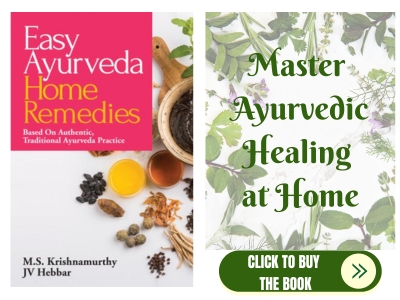







28 comments
shraddha
article is good sir, tell me conditions where chitrak is contraindicated.
Dr J V Hebbar MD(Ayu)Author
Thanks. In cases of hyperacidity and peptic ulcers, it is contra indicated (or it should be used judiciously).
shraddha
thanks to answer
dr.jahnavi
good informative article sir.
kindly mention some formulations having chitraka as the main ingredient and their different uses.
Dr J V Hebbar MD(Ayu)Author
Chitrakadi Vati – http://ayurmedinfo.com/2012/06/29/chitrakadi-vati-benefits-dosage-ingredients-and-side-effects/
Chitraka Haritaki – http://ayurmedinfo.com/2012/02/10/chitrak-haritaki-uses-dose-side-effects-and-ingredients/
kalyana Gulam – http://ayurmedinfo.com/2012/05/06/kalyanagulam-benefits-dose-side-effects-how-to-use-ingredients/
Mandoora Vatakam – http://ayurmedinfo.com/2012/05/10/mandoora-vatakam-benefits-dosage-side-effects-ingredients/
Ashish Verma
sir is chitrak used for weight loss?
sourabh
Sir ,what is needed in ama conditions?
p.ranjith
hello sir,is plumbago zeylanica [white flowers] is used for antidepressant/ nt? and also cns activity
Dr Malini Bhat
No sir it is not. It is carminative, digestive, useful in hemorrhoids, anti inflammatory, and anti colic.
p.ranjith
Sir please help me to confirm that the chemical constituent named ‘PLUMBAGIN’ having any CNS activity or not,,,because i have referred many review articles thats shows me that chemical working as anti depressant…
Hope you will be needy…thank you
p.ranjith
Thank u sir.. let me know some cns activity plant list
Dr Malini Bhat
Sir, its Madam and not sir.
Here are some cns activity plants:
> Sesbania grandiflora
> Adiantus capillus
> Balanitis roxburghii
> Argemone mexicana etc.,
P.C.Sudheer
Is Chitrak used to cure Varicose veins
Michelle Osborne
I am curious please, is the root the only part of the plant that can be used? It grows like weeds in Florida and is my sons favorite flower – we HAD to plant one for him in our home and his grandfathers home as well. he loves the blue color. thank you
Deepa
this plant is available in tamilnadu
432867
hello …sir where is the referance of chitraka shodhan…?
Dr J V Hebbar MD(Ayu)Author
Will try to find it out.
Anon
Can this be used to treat candida – yeast infection?
Dr J V Hebbar MD(Ayu)Author
Usually herbs like neem, triphala, turmeric etc are used.
Khalid Lakdawala
Can this herb be used for ulcerative colitis? Can you please suggest popular brands available in the market.
Dr J V Hebbar MD(Ayu)Author
This is a bit strong herb for using in Ulcerative colitis.
kaushlendra Singh
Hi Sir,
I am in China now and come to know that this plant flower (white), is a remedy for aurthiritis when used flower extract and applied on knee for 30 minuets!
Please advise if it’s true !
Dr J V Hebbar MD(Ayu)Author
In case of knee stiffness, it is very commonly used both for external application and also for oral intake.
Vijaykumar Ramakrishna
I understand that Plumbago tends to readily absorb metals and heavy metals from the soil which was a reason to discourage its use. Could you clarify since most Indian soils are polluted. Thanks
Dr J V Hebbar MD(Ayu)Author
Can you please provide the reference of Plumbago to absorb heavy metals readily?
For that instance, even Indian mustard also absorbs some metals readily.
It does not mean that we should stop using it.
Jay
In an old book, i read that root paste of chitramoola made by rubbing with lemon juice, when applied on cancerous tumors, will help to reduce the tumor.
Can you please confirm if it can be applied on a patient detected with breast cancer ?
Dr J V Hebbar MD(Ayu)Author
It can be useful to some extent. But I cannot guarantee a permanent cure for cancer with this remedy.